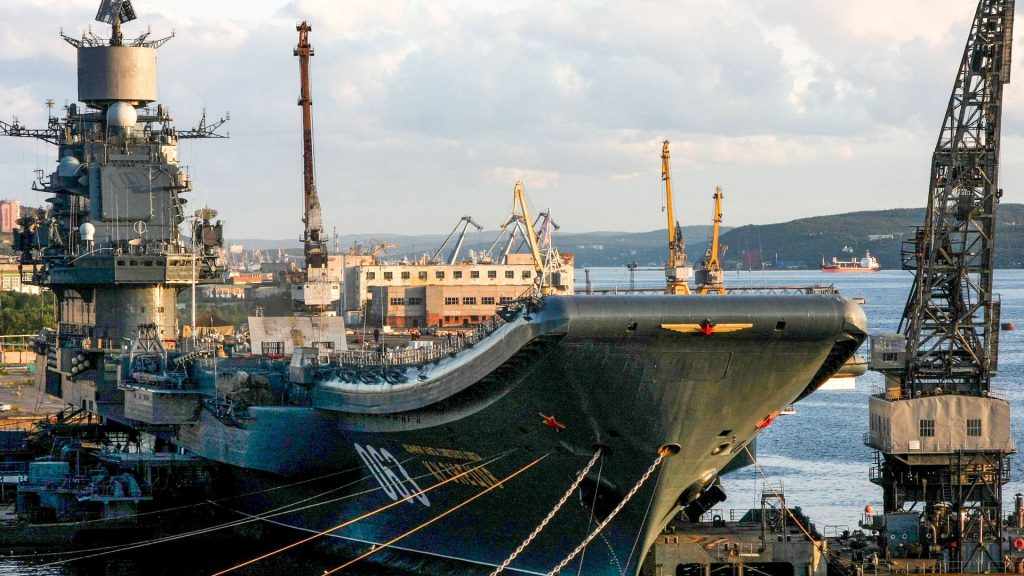Why Russia is scrapping its only aircraft carrier

Russia’s sole aircraft carrier, the Admiral Kuznetsov, is being decommissioned after nearly four decades of troubled service. The move, confirmed by Andrei Kostin — head of Russia’s state shipbuilding corporation and chairman of VTB Bank — marks the end of Moscow’s long-running attempt to maintain a viable carrier fleet.
“We believe there’s no point in repairing it anymore,” Kostin told the Kommersant Russian media outlet. He added the 40-year-old vessel would likely be “sold or disposed of.” Launched in 1985, the Kuznetsov was Russia’s only carrier capable of launching fixed-wing aircraft. But decades of design flaws, mechanical failures, and costly accidents left it a liability rather than an asset.
Aging carrier from a different era
Unbiased. Straight Facts.TM
The Russian navy’s fleet totals 290 vessels, just nine fewer than America’s 299.

Unlike U.S. supercarriers that use steam or electromagnetic catapults, the Admiral Kuznetsov relied on a ski-jump ramp to launch aircraft. That design limited what it could carry, both in aircraft types and payloads. Heavier jets, such as airborne early warning and control (AWACS) planes, couldn’t take off from its deck, leaving the ship effectively blind compared to Western carrier strike groups.
The Kuznetsov carried a crew of about 2,600 sailors and could host roughly 26 fixed-wing aircraft and two dozen helicopters. By comparison, a U.S. Navy Nimitz-class carrier typically deploys more than 70 aircraft, including AWACS and support craft.
The carrier’s operational record was equally underwhelming. When deployed to Syria in 2016, the ship belched thick black smoke — signs of problems with its heavy fuel oil engines — and lost two aircraft during the campaign. The remainder of its air wing had to relocate to a land base for the rest of the operation.
Wave of disasters
Over its lifetime, the Kuznetsov spent more than half its 33 years in repairs. A series of mishaps compounded its reputation as a “Ship of Shame.”
In 2018, the floating dry dock where the ship was being refitted sank, dropping a massive crane onto the carrier’s deck. A year later, welders accidentally ignited oil-soaked rags, sparking a fire that caused nearly a billion dollars in damage. Another blaze followed in 2022.
In the last decade, Russia poured more than $1 billion into trying to keep the ship afloat, but sanctions following the invasion of Ukraine made acquiring foreign-made replacement parts nearly impossible. The Kremlin also redirected resources to the war effort, effectively dooming the overhaul.
A blow to Russian naval prestige
Even before the decision to scrap the Kuznetsov, Russia’s naval aviation capability had been in steep decline. The carrier has been out of service since 2017 and played no role in the war in Ukraine. Its demise leaves Moscow without a single operational aircraft carrier — an unprecedented position for a country that once aspired to rival the U.S. Navy.
Former Pacific Fleet Commander Sergei Avakyants downplayed the loss, calling aircraft carriers “a thing of the past.” But that sentiment isn’t shared by other major powers. Both China and India — ironically operating carriers derived from the same Soviet designs — are actively expanding their fleets. China has already launched its third carrier, the Fujian, while India’s domestically built Vikrant joined the Vikramaditya, itself a refitted Soviet ship.
The end of an era
For Russia, the scrapping of the Admiral Kuznetsov is both a practical and psychological setback. Since their introduction in the early 20th century, aircraft carriers have symbolized global reach and national power. Losing its only one signals a retreat from that image.
During this year’s Navy Day celebrations, President Vladimir Putin made no mention of the carrier. Instead, he praised Russia’s submarine fleet as the cornerstone of the country’s nuclear deterrent. His silence spoke volumes: the future of the Russian Navy may now rest beneath the waves rather than on the surface.
The United States Navy currently operates 11 supercarriers, in addition to some amphibious assault ships that can also launch aircraft. As India and China continue to project power through their growing carrier strike groups, Russia’s once-proud flagship now faces the scrapyard, a relic of Cold War ambition and modern economic reality.
The post Why Russia is scrapping its only aircraft carrier appeared first on Straight Arrow News.





